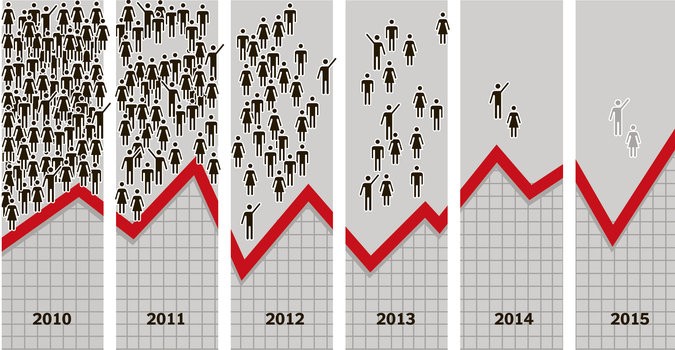Strategies Debt’s Two Sides Riches and Misery
Post on: 16 Март, 2015 No Comment

Photo
The character Wilkins Micawber, played by W.C. Fields in a 1935 movie version of Charles Dickenss “David Copperfield,” warned that debt was a recipe for unhappiness. Credit MGM
Debt is a double-edged sword. Charles Dickensâs character Wilkins Micawber warned eloquently of debtâs downside: âAnnual income twenty pounds, annual expenditure nineteen nineteen and six, result happiness. Annual income twenty pounds, annual expenditure twenty pound ought and six, result misery.â
He was certainly right: Debt can blight your life. But what Mr. Micawber didnât say is that debt can make you much wealthier. Then itâs called leverage, and it can supercharge your investment returns if you use it wisely.
To a startling degree, the two sides of debt â its destructive and its beneficial powers â have been responsible for the shifting fortunes of vast numbers of Americans since the turn of the century. Data collected by the Federal Reserve and analyzed in a recent paper by Edward N. Wolff. an economics professor at New York University, makes it clear that many American households of moderate means got much richer, on paper, anyway, from 2001 to 2007, largely because of rising home prices combined with mortgage debt.
The data also shows that when the housing market soured, that debt intensified an extraordinarily sharp decline in the household wealth of most Americans from 2007 to 2010. The effects of that shocking decline on the wealth of American households since then â and the proper role of debt in the future â are much less obvious. But important and sometimes counterintuitive lessons about the use and abuse of debt are already emerging from the data.
First, consider that while debt is inherently dangerous, when itâs handled carefully and appropriately it may be a very good thing. Itâs easy, after the ravages of the last recession, to forget that during the exhilarating period from 2001 to 2007, many middle-class American homeowners had good reasons to be happy about their mortgage debt. It helped give the middle 60 percent of American households better overall investment returns than people who were much better off â those in the top 1 percent. âThat differential in the rate of return is pretty remarkable,â Mr. Wolff said in an interview. âIt shows you that debt, in that period, had a very positive wealth effect. Itâs why people in the middle had higher returns â when you include debt â than people at the very top.â
Hereâs the reason: While people in the top 1 percent tend to carry very little debt as a proportion of their overall assets, people in less exalted financial strata typically need to carry mortgage debt to finance a house, which is usually their most important asset. In the most basic terms, the beneficial effect of leverage works like this: If you invest $100,000 and it grows to $103,000 in one year, after inflation, then your real annual rate of return is 3 percent. If youâve borrowed half the money, or $50,000, and pay 2 percent interest, or $1,000, on the loan, your net return is $2,000. But because your investment was only $50,000, thatâs a better rate of return â of 4 percent.
In other words, by borrowing, you increased your rate of return. Thatâs what happens for homeowners when they hold a mortgage and the value of their house rises. Whatâs more, as a matter of longstanding public policy in the United States, additional benefits are bestowed on homeowners with mortgages, who can reduce their income taxes by taking a mortgage interest deduction. And as Iâve written, government and quasi-government entities have been actively supporting the housing and mortgage markets for years, adding to the benefits of homeownership.
From 2001 to 2007, in one sense, the mortgage advantage outweighed the considerable benefits enjoyed by households in the top 1 percent, whose wealth gives them access to the most rarefied opportunities in the stock, bond and commodities markets â and in just about any other area they want to pursue. And, if you leave debt out of it and look at assets alone, much as you might expect, the overall portfolios of households in the top 1 percent were better. They had real annual rates of return of 3.86 percent from 2001 to 2007, compared with only 2.95 percent for people in the middle 60 percent, according to data derived by Mr. Wolff from the Federal Reserveâs 2013 Survey of Consumer Finances. It appears in his paper, âHousehold Wealth Trends in the United States, 1962-2013: What Happened Over the Great Recession? â
Add debt to the mix, however, and you turbocharge the returns. Thanks to leverage, the net assets of the middle 60 percent of households, including the effect of debt, increased 5.95 percent in those years, far better than the 4.03 percent gain for households in the top 1 percent.
Wealthier people shared in the benefits of homeownership too â as they do now â but they have so much other wealth and so little debt as a proportion of their total assets that homeownership isnât as crucial to their net worth. Mr. Wolff has found that in 2013, for example, mortgage debt for the top 1 percent was only 16.5 percent of the value of their homes; for households in the middle 60 percent of the population, mortgage debt accounted for almost 50 percent of home values. And home equity â the value of your home after loans are subtracted â accounted for only 7.3 percent of the total assets of the top 1 percent. The comparable number for the middle 60 percent was 31.4 percent.
Thatâs why the net worth of the households in the middle took such a savage beating after housing prices began to fall in 2007. From 2007 to 2010, leverage was a terrible weapon that hurt the middle class much more severely than the top 1 percent. In that period, Mr. Wolff has found, after inflation, without counting the effects of debt, the total portfolios of the top 1 percent declined 6.37 percent annually. The comparable decline for the middle 60 percent of the population was 7.06 percent.

When you add debt to the calculation, the picture is far worse for the middle 60 percent. The real net worth of these households dropped 10.55 percent annually versus a drop of 6.52 percent for the top 1 percent. Those are the most severe losses in many decades.
From the standpoint of wealth, poorer people endured vastly more punishing blows than both the very wealthy and those of more moderate incomes, the data shows. The poorest 20 percent of the population was in bad shape to start with. In 2001, these households were already locked in the Micawber nightmare, unable to pay their bills and spiraling downward. They had an average negative net worth of $10,800, and while the rest of the country was getting richer they were falling further behind. By 2007 they had an average net worth of negative $15,200 â and by 2010 they plunged further into a negative net worth, on average, of $25,500. Few of these people owned homes, but when the mortgage crisis hit, they suffered acutely.
The big picture, of course, is that carnage in the American housing and mortgage markets led to a global financial crisis and contributed to a worldwide recession. Those shocks led to foreclosures. a drop in the rate of homeownership, a reduction in mortgage debt â and the still transitional asset markets with which we are grappling today.
While the most recent figures available from the Federal Reserve show that both the median and mean incomes of American households had not yet recovered by the end of 2013, itâs a different situation for wealth. Mean, or average, household wealth has reached a new high. Federal Reserve statistics on wealth show that from June to September (the third quarter) of last year, average wealth was 9.4 percent higher than in the first quarter of 2008, its previous peak. Asset prices have been rising, especially in the stock market, and wealthier households, which own far more stock, have benefited disproportionately.
The rich could have done even better if they had used more leverage, Mr. Wolff noted. âItâs surprising, when you look at the numbers, that rich people donât take on more debt,â Mr. Wolff said. âThey can withstand the downturns â and the debt would increase their returns and make them richer over the long run.â
For everyone else, debt raises much trickier questions. Should public policy encourage people to take on more debt, or should we follow Mr. Micawberâs advice and try to avoid it? Should poorer people be encouraged to take on debt in order to gain a foothold on the road to wealth? These are complex issues, and I expect to return to them.
A version of this article appears in print on February 22, 2015, on page BU6 of the New York edition with the headline: Debts Two Sides: Riches and Misery.














